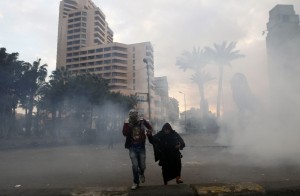
(AFP File Photo)
Hotel and tourist facilities insurance premiums were raised 15% this past year, due to the high risks faced by the tourism sector, said former Chamber of Hotels chairman Wasim Mohieddin.
Mohieddin attributed the rise to the volatile political and security situation in Egypt in the last three and a half years. He also said that the situation has had a negative impact on the sector, especially with regard to revenues.
Tourism revenues fell 41% this year versus last year, when tourism income fell to $5.9bn.
There are approximately 1,200 hotels across Egypt, spread throughout the Red Sea, South Sinai, North Coast, Alexandria, Cairo, Luxor and Aswan areas, according to Mohieddin.
According to the Chamber of Hotels, hotels in the Red Sea and South Sinai areas are currently operating at two-thirds capacity.
Mohieddin believes that insurance premiums will not fall in price without competition between companies to secure more tourist facilities for insurance.
The insurance covers the risk of fire, theft, and natural disasters, according to Mohieddin.
He said that the new risk of terrorism and explosions will raise the insurance premiums, which will change the relationship between the insurance company and the hotel.
Insurance companies have stopped including profit-loss risk, or the risk of losing profit, within their insurance risk, which is expected due to the acute crisis suffered by hotels and tourist facilities, Mohieddin said.
“It varies depending on the region the hotel or tourist facility is located in,” said a member of the Chamber of Hotels in regards to differences in rising rates for insurance premiums, who added that hotels in South Sinai and the Red Sea differ from those in Cairo, Luxor and Aswan.
Red Sea and South Sinai hotels have retained their highest levels of occupancy since the 25 January Revolution in the last year and a half, according to the Chamber of Hotels.
The high occupancy rates are evidence of these hotels’ ability to pay their insurance premiums to insurance companies. This is in contrast to hotels in Cairo, Luxor and Aswan, which have been struck hardest by the economic recession and the falling number of tourists visiting Egypt.
In South Sinai, where one-third of Egypt’s hotels are located and the total number of rooms is 225,000, there is a high risk due to the South Sinai’s proximity to political unrest in Israel and Palestine. Also affecting the situation are terrorist operations in North Sinai, according to a hotel manager in Sharm El-Sheikh.
He said insurance policies are usually signed for five years, but vary in their conditions from hotel to hotel, depending on its location, size, and reputation.




